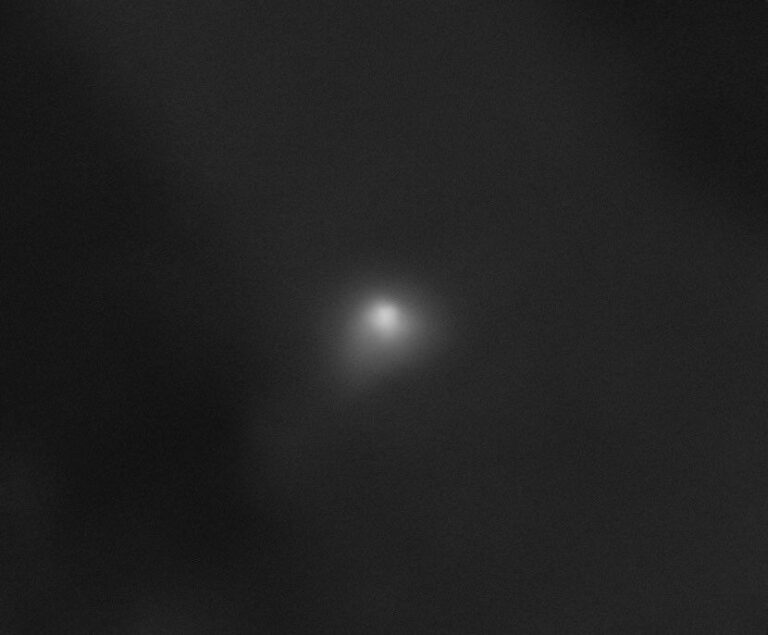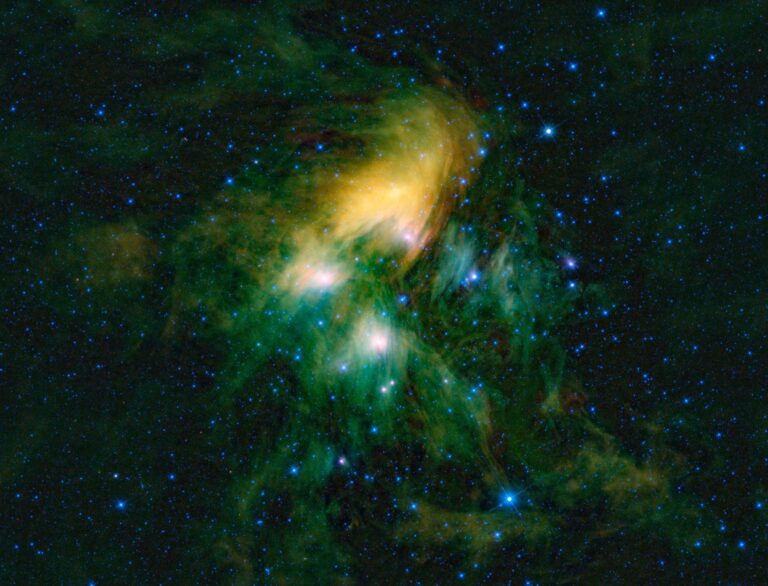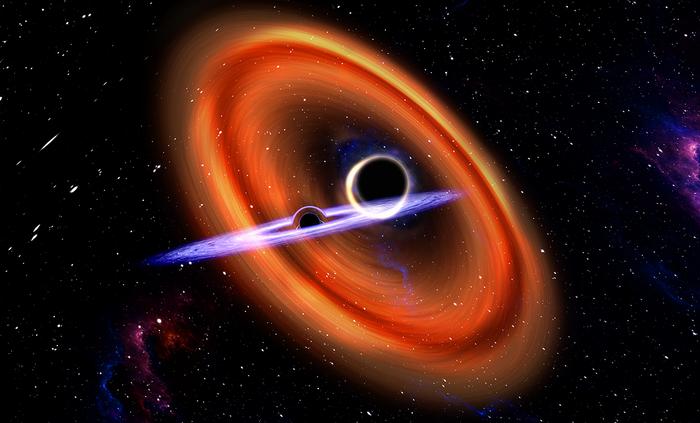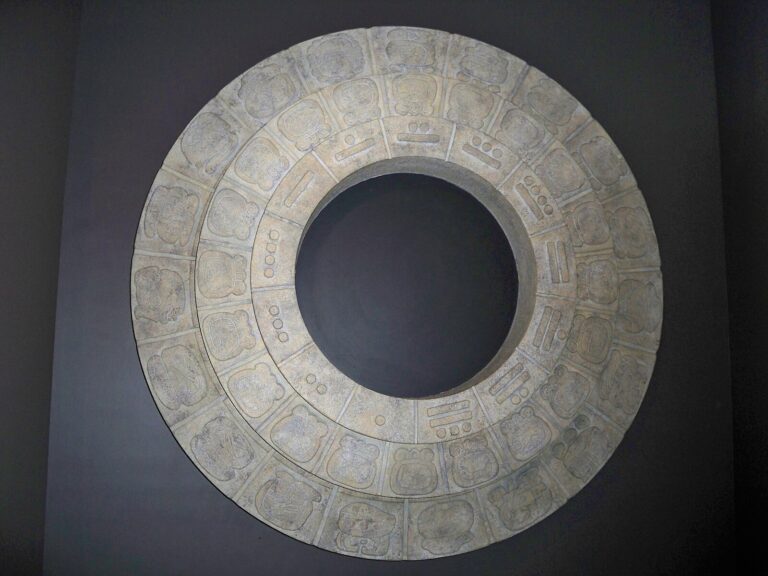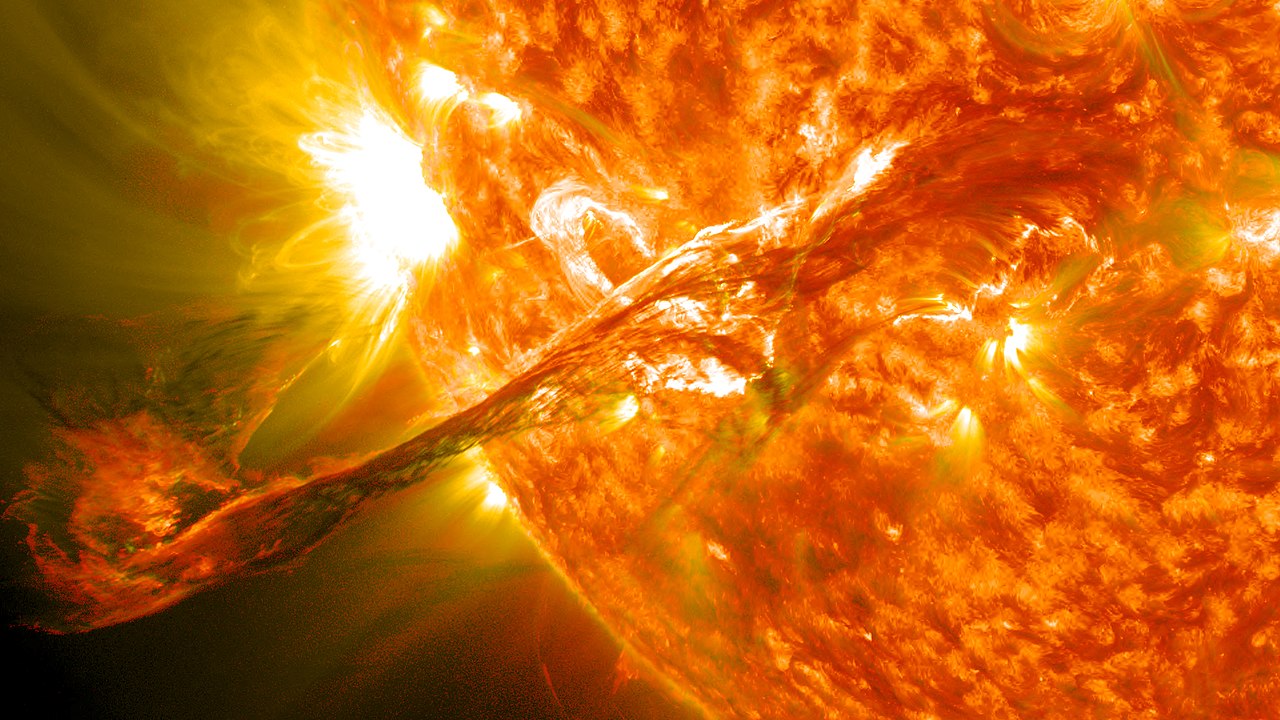
Credit: NASA Goddard Space Flight Center
Key Takeaways:
- Astronomers have achieved the first confirmed detection of a coronal mass ejection (CME) originating from a star other than our Sun, a phenomenon previously only inferred in exoplanetary contexts.
- This discovery was made by a research team using the European Space Agency’s XMM-Newton space observatory and the LOFAR radio telescope, identifying a short, intense radio signal indicative of stellar material escaping into space.
- The observed CME emanated from a red dwarf star, traveling at an estimated 1,500 miles per second, a velocity determined to be sufficient for stripping atmospheres from any proximate planets.
- This finding significantly advances the understanding of stellar space weather and its implications for exoplanetary habitability, particularly highlighting that intense CMEs around smaller stars may critically impact atmospheric retention.
A coronal mass ejection (CME) is an eruption of gas and plasma from the Sun. Solar physicists record a number of them each year. Fortunately, most head into space in directions away from Earth. When one does encounter our planet, it can cause geomagnetic storms, displays of aurorae, and even disruption or damage to communications and electrical power grids. If a planet were close enough to our star, a powerful enough CME event could even strip its atmosphere away.
And while they may be common to the Sun, astronomers had never confirmed seeing one on another star — until now. Using the European Space Agency’s XMM-Newton space observatory and the LOFAR telescope, a research team has spotted a non-solar CME.
“Astronomers have wanted to spot a CME on another star for decades,” says Joe Callingham of the Netherlands Institute for Radio Astronomy (ASTRON), author of the new research published in Nature. “Previous findings have inferred that they exist, or hinted at their presence, but haven’t actually confirmed that material has definitively escaped out into space. We’ve now managed to do this for the first time.”
As a CME travels through the layers of a star and out into space, it produces a shock wave and also a burst of radio waves. This short, intense radio signal was picked up by the team, which identified it as coming from a star some 40 light-years away.
“This kind of radio signal just wouldn’t exist unless material had completely left the star’s bubble of powerful magnetism,” adds Callingham. “In other words, it’s caused by a CME.”
What kind of star is it?
The particular star observed is a red dwarf, the most common type of star the generates energy through nuclear reactions in its core. These stars have maximum temperatures of 6,600 degrees Fahrenheit (3,600 degrees Celsius) with no more than 60 percent of the Sun’s mass and 10 percent of its brightness. Most of the exoplanets so far discovered orbit this kind of star.
The radio signal was spotted using the Low Frequency Array (LOFAR) radio telescope thanks to new data processing methods developed by co-authors Cyril Tasse and Philippe Zarka at the Observatoire de Paris-PSL. The team then used ESA’s XMM-Newton to determine the star’s temperature, rotation, and brightness in X-ray light. This was essential to interpret the radio signal and figure out what was actually going on.
“We needed the sensitivity and frequency of LOFAR to detect the radio waves,” says co-author David Konijn, a PhD student working with Joe at ASTRON. “And without XMM-Newton, we wouldn’t have been able to determine the CME’s motion or put it in a solar context, both crucial for proving what we’d found. Neither telescope alone would have been enough – we needed both.”
Look out!
The researchers determined the CME to be moving at 1,500 miles per second (2,400 kilometers per second). Only about 5 percent of the Sun’s CMEs travel at this speed. The ejection would have been both fast and dense enough to completely strip away the atmospheres of any planets near the star.
The atmosphere-stripping ability of this CME can tell us a lot about the possibility of life on other worlds. Scientists believe a planet can sustain life if it sits within the star’s habitable zone. That is a distance where liquid water can exist on a planet’s surface. But if a star has frequent eruptions of powerful CMEs, any nearby worlds could lose their atmospheres.
“This work opens up a new observational frontier for studying and understanding eruptions and space weather around other stars,” adds Henrik Eklund, an ESA research fellow based at the European Space Research and Technology Centre (ESTEC) in Noordwijk, The Netherlands.
“We’re no longer limited to extrapolating our understanding of the Sun’s CMEs to other stars. It seems that intense space weather may be even more extreme around smaller stars — the primary hosts of potentially habitable exoplanets. This has important implications for how these planets keep hold of their atmospheres and possibly remain habitable over time.”
“XMM-Newton is now helping us discover how CMEs vary by star, something that’s not only interesting in our study of stars and our Sun, but also our hunt for habitable worlds around other stars,” says ESA XMM-Newton Project Scientist Erik Kuulkers. “It also demonstrates the immense power of collaboration, which underpins all successful science. The discovery was a true team effort, and resolves the decades-long search for CMEs beyond the Sun.”



